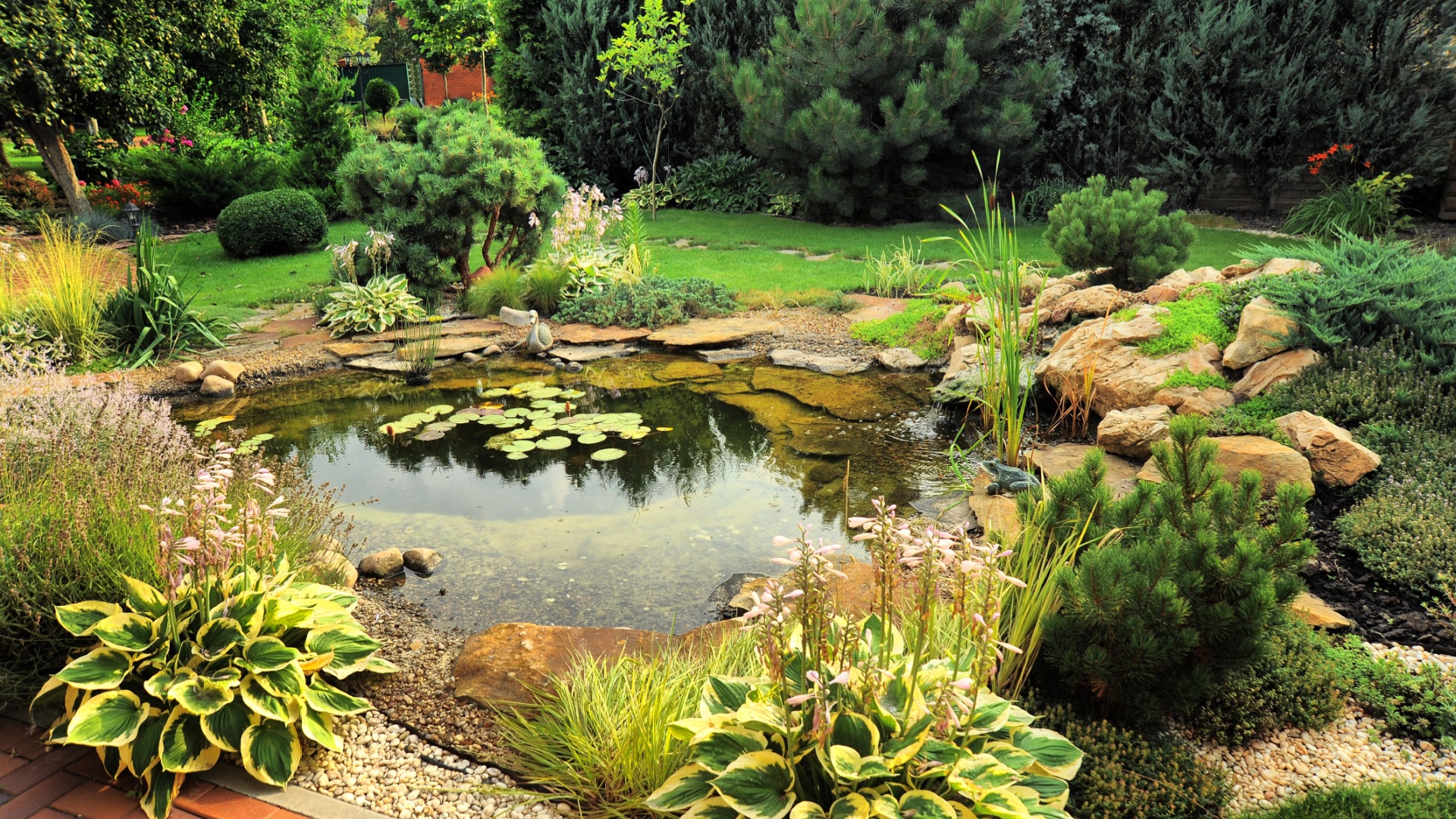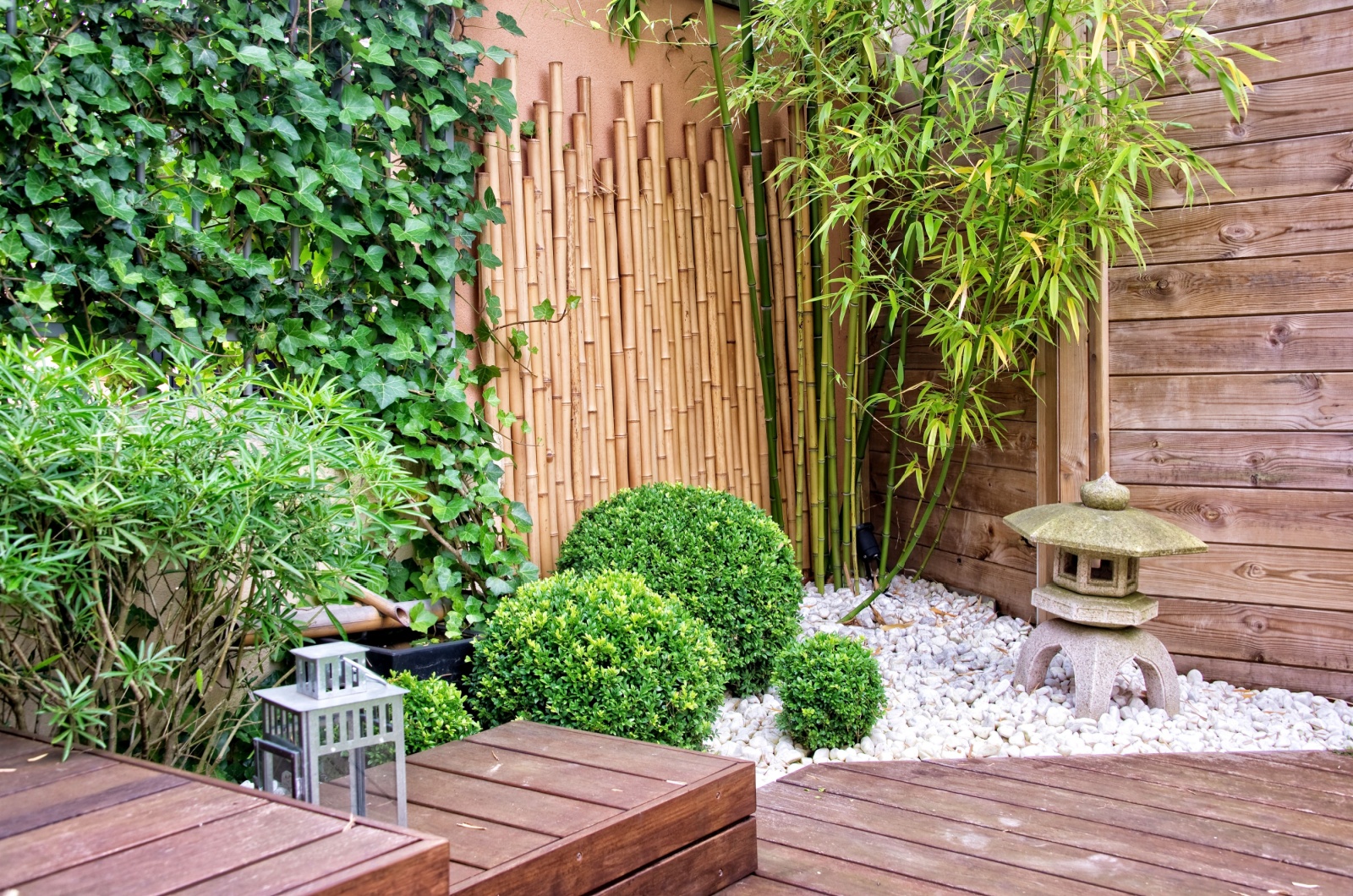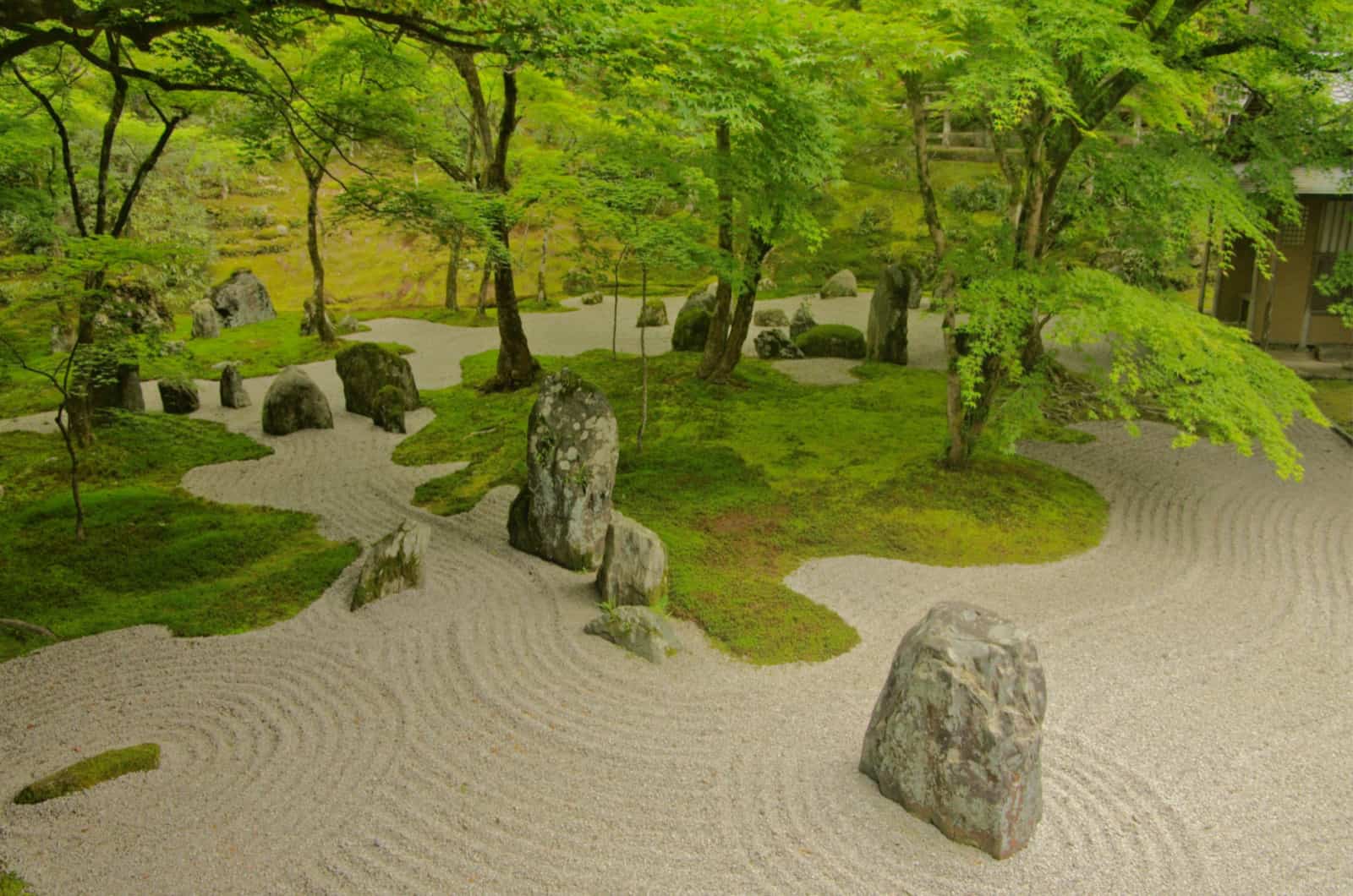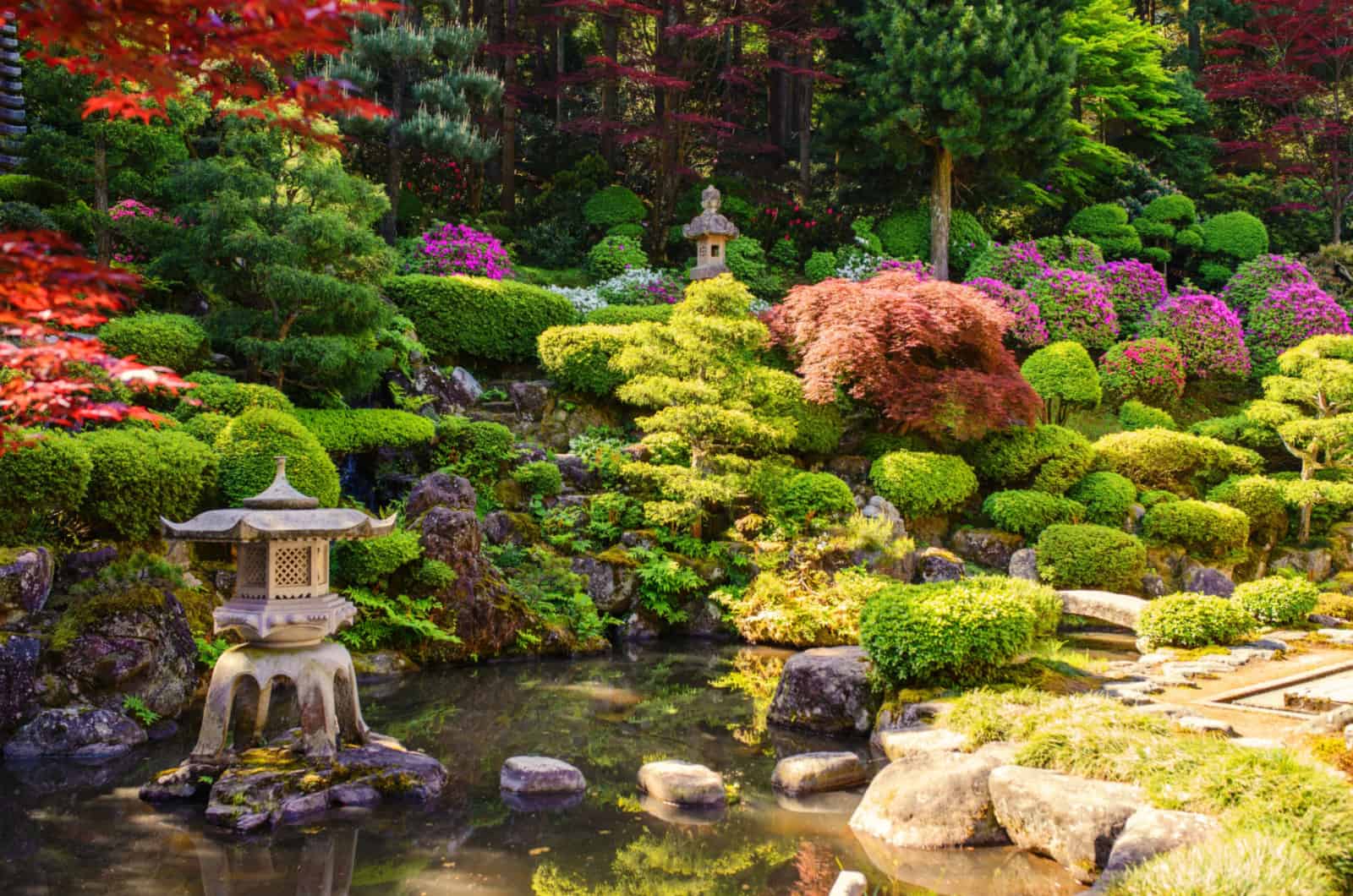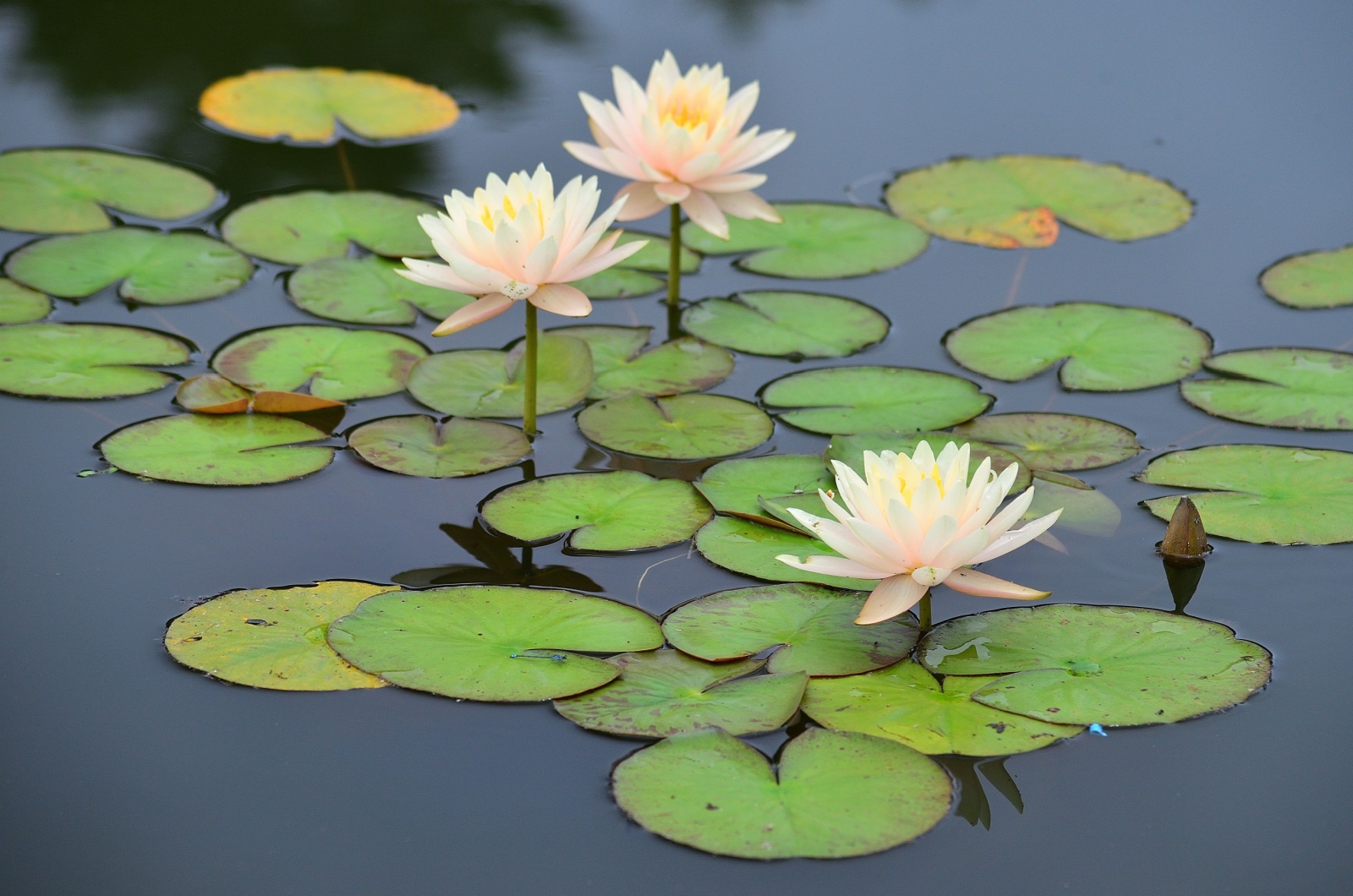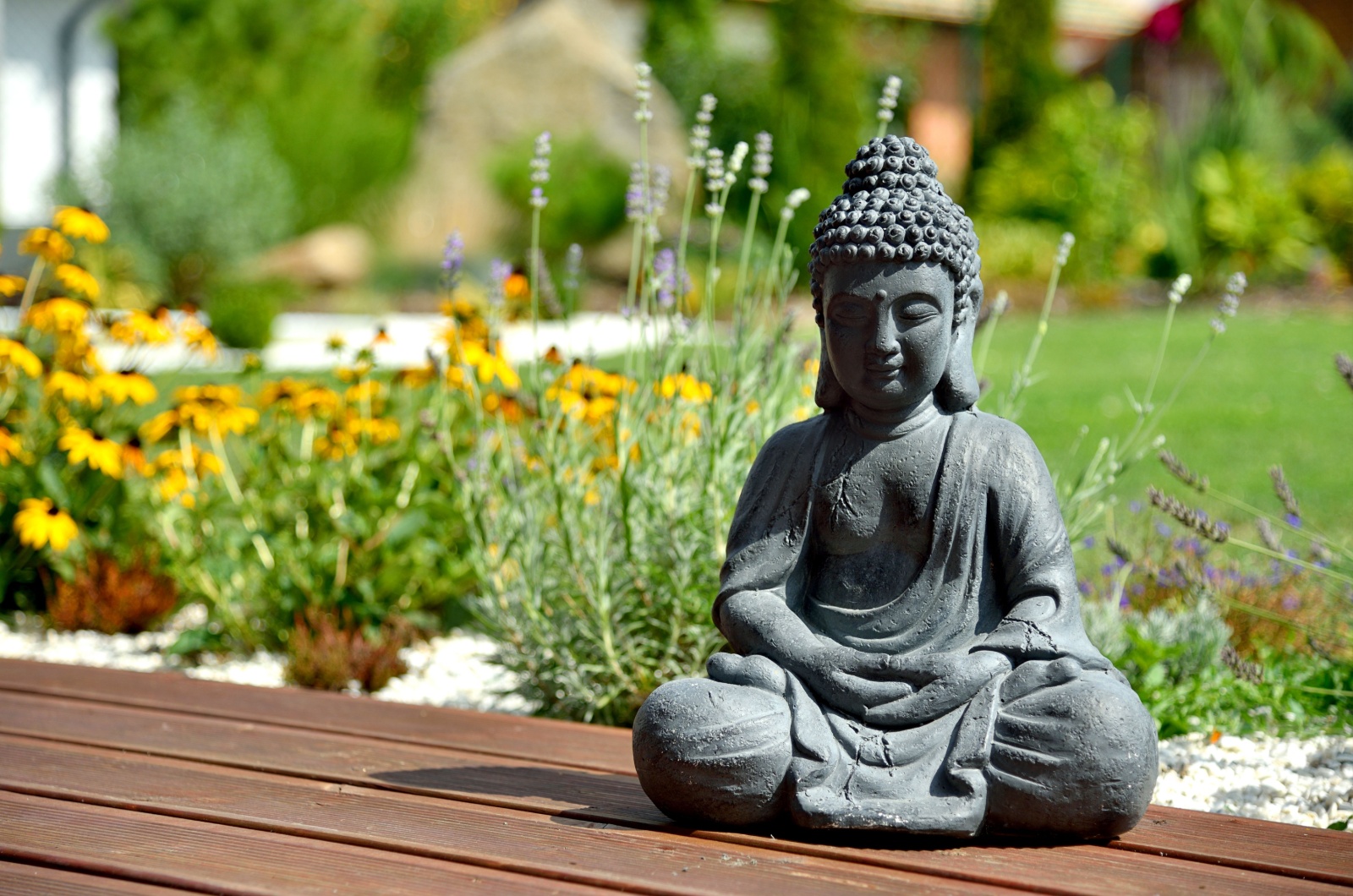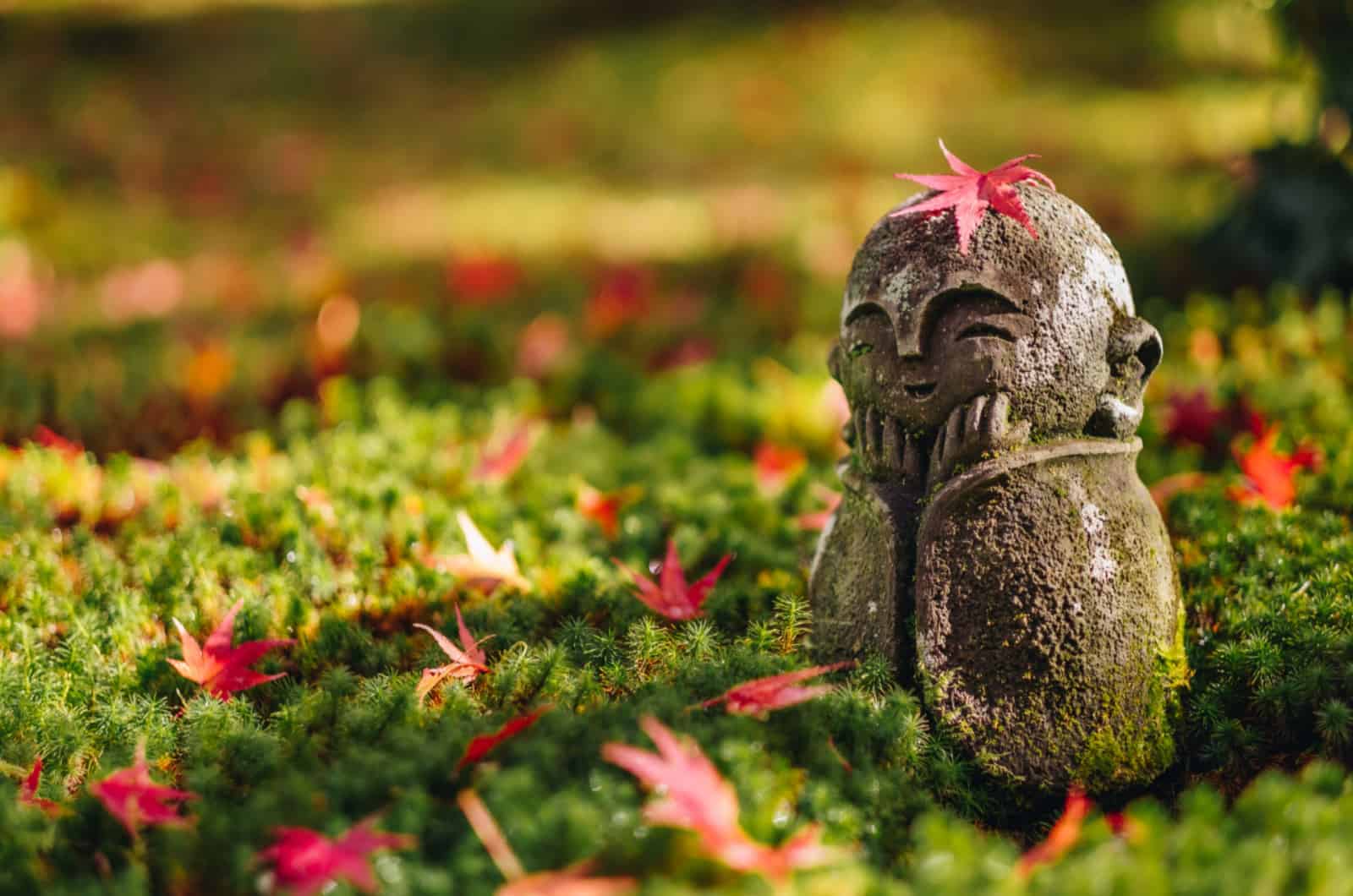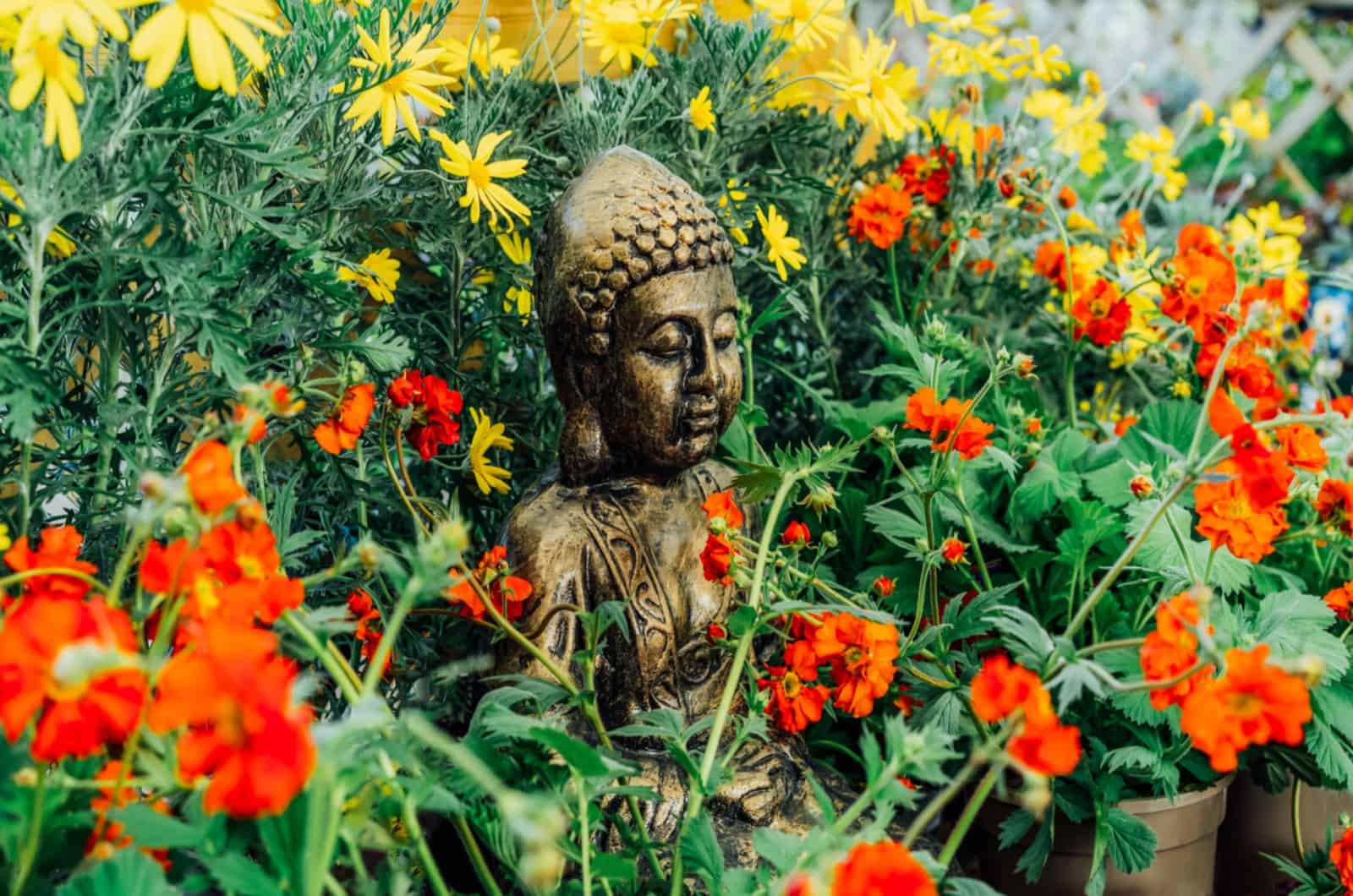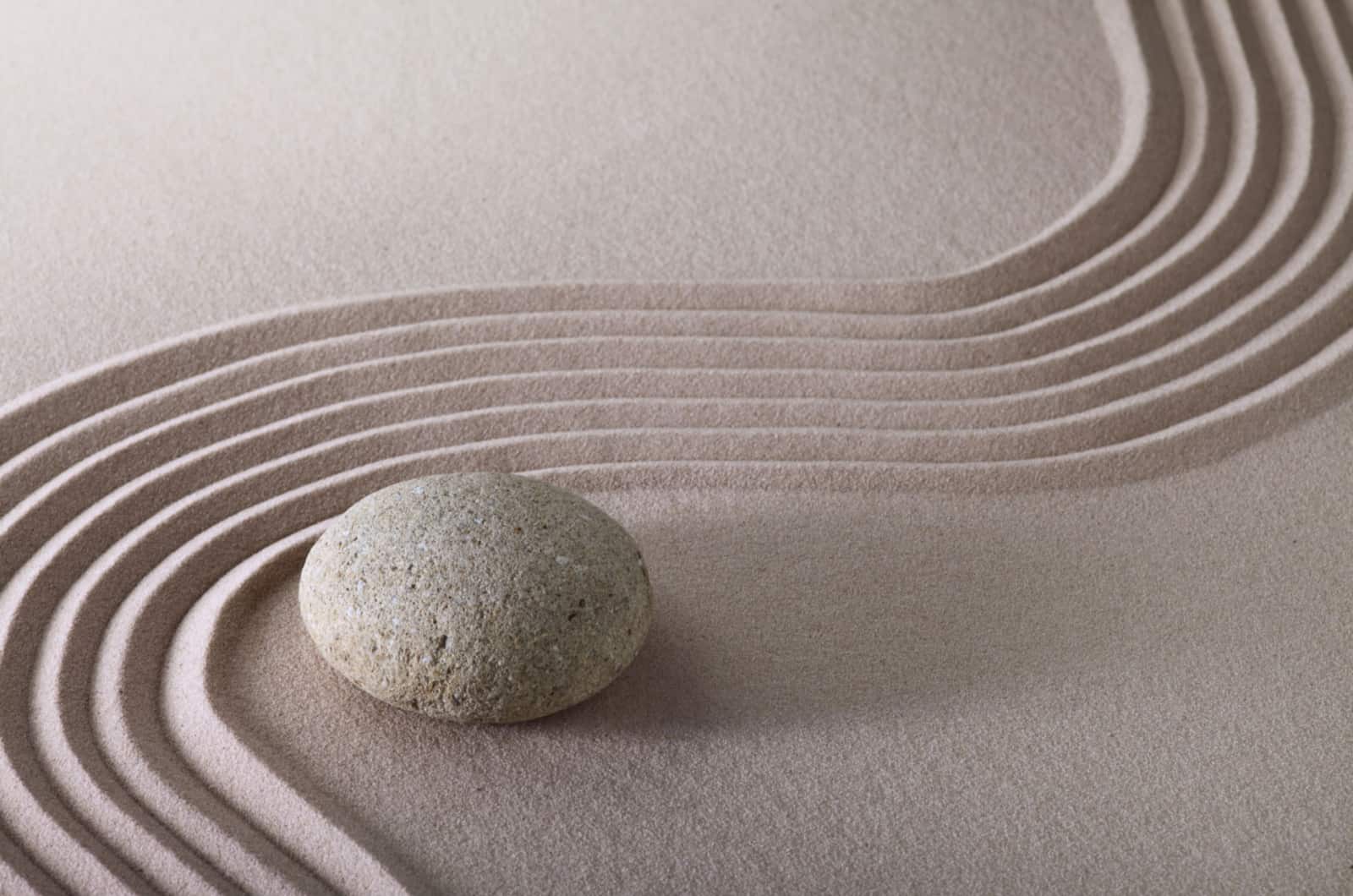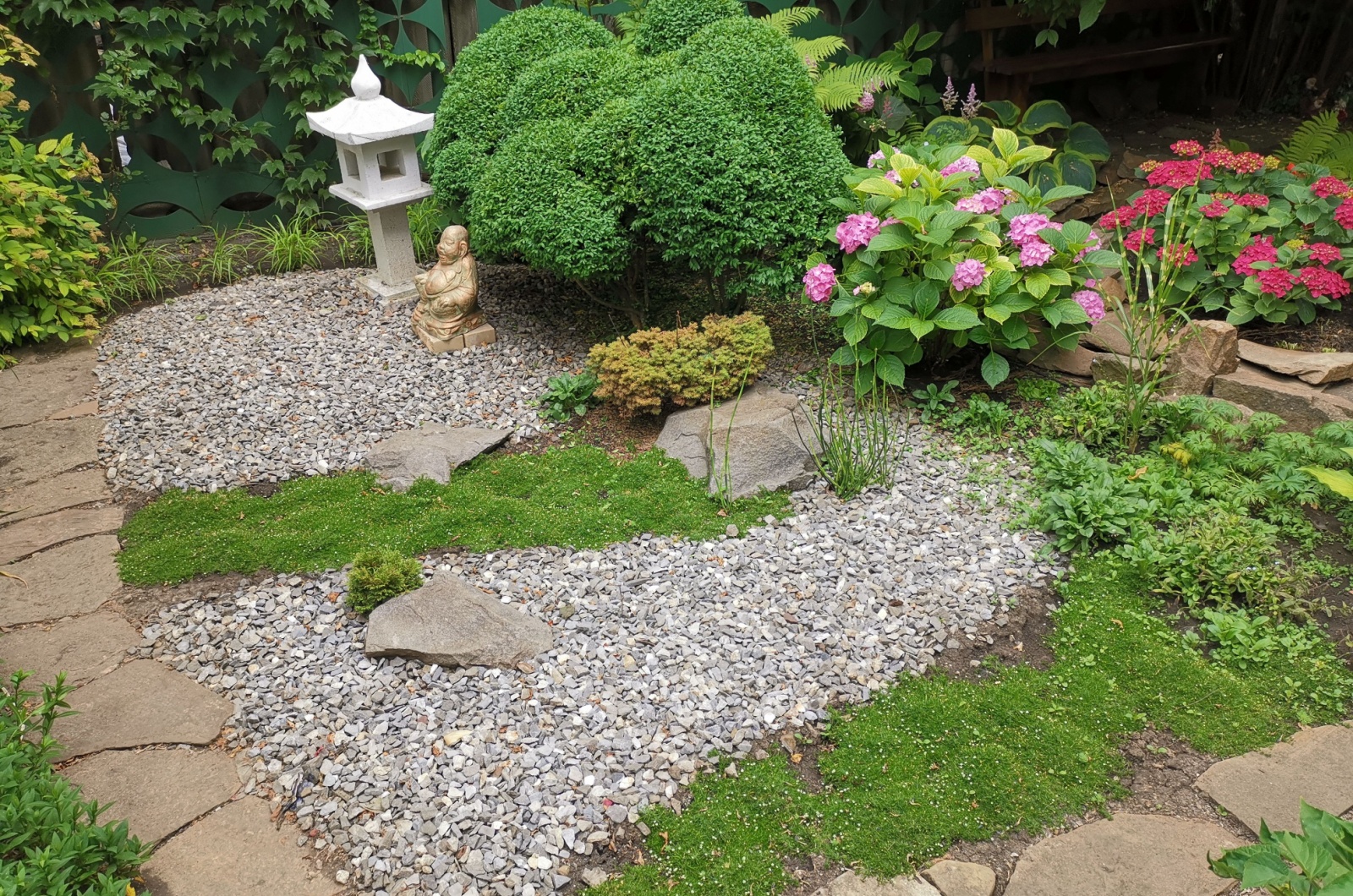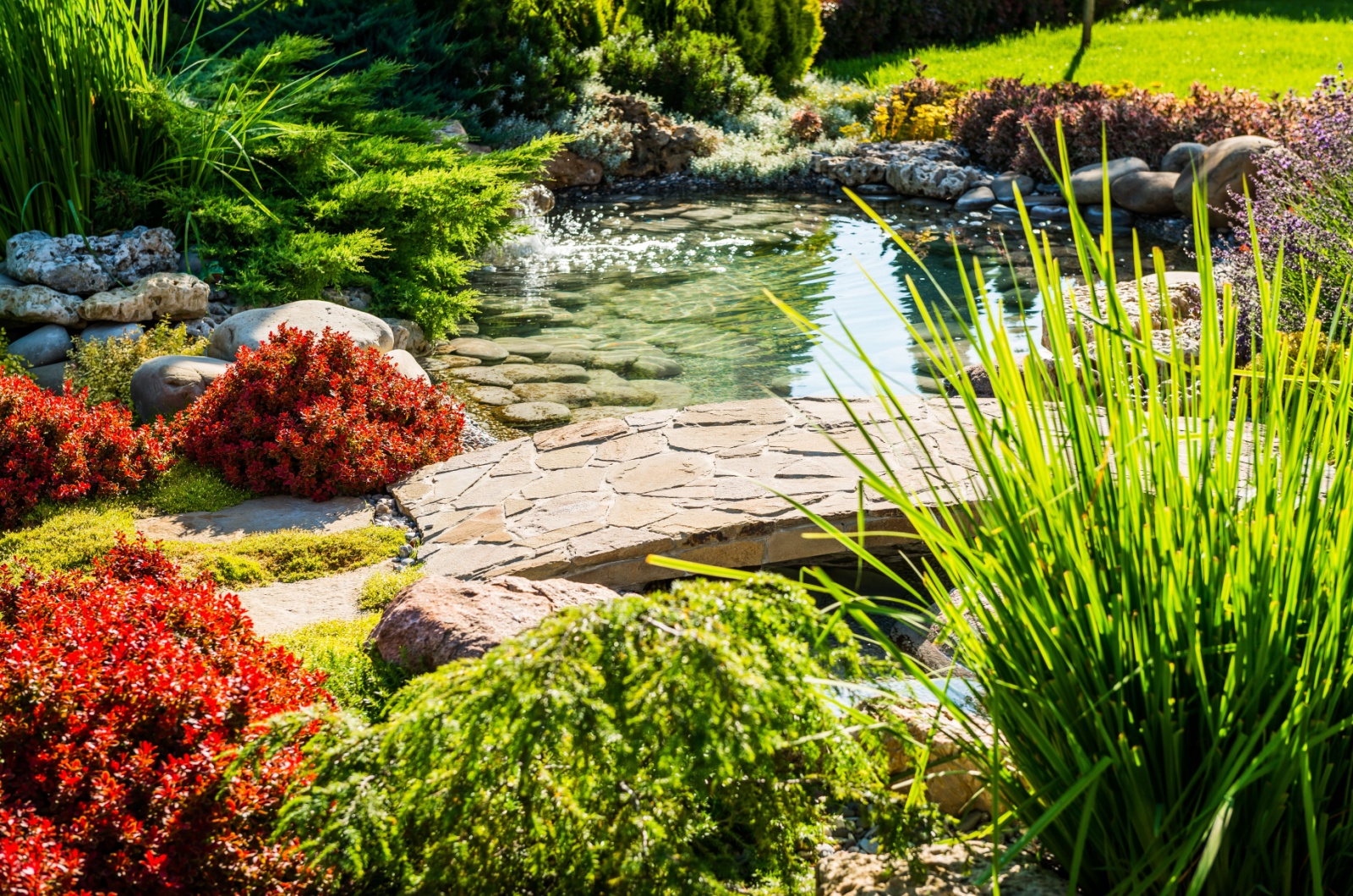Nature, nature, and more nature! The Japanese know very well that the best way to relax is by spending time in nature.
However, we are well aware that not everyone can spend as much time in nature as they might like. Many of us live in large cities where relaxing natural environments are few and far between.
The Japanese took care of this by introducing a type of garden you can make even in a very small space.
A Japanese Zen Garden, also known as the Japanese rock garden, follows the idea of oneness and should represent a meditative space. They use rocks, sand, and other items to create a stress-relief space anyone could enjoy.
Making a garden like this may seem pretty expensive, but the wonderful Zen garden ideas on a budget in this article will prove otherwise.
The great thing is that you can use many things you already have in your home.
Read on to find everything you need to know and more!
Zen Garden Ideas On A Budget
With a few common materials that you likely already have or can readily buy, you can replicate the appearance and atmosphere of meditation areas in temples across the world.
You can use loose rocks to create walkways, add water features to hear the sound of moving water, and add plants and sculptures.
Purchase different items in home improvement stores and arrange everything to get that Zen environment.
Let’s create a peaceful paradise!
Rocks And Sand
Let’s start with a Zen garden symbol, karenagare (raked sand). Karenagare goes great with large rocks.
Simply designate an area for your sand and put larger rocks anywhere you would like to add a little Zen to your garden.
Keep a small rake nearby so you can rake the sand in the desired way, for example, ocean waves.
Make A Meditation Area
Find a quiet area surrounded by wonderful green flora, then add Zen by piling stones and sand. Keep in mind that you want this to be a fairly private area, so you might need to screen it off with larger potted plants or some low-cost bamboo screens.
First, clear your ‘hidden location’ and add larger rocks to form a circle. Add a layer of sand to the circle and rake it in the desired shape. Put some flat stones in the sand circle; you don’t have to follow any special patterns – let your imagination do the work!
Of course, adding cobblestones can make your Zen garden a bit fancier.
Cobblestones will look stunning combined with plants.
Make DIY Pathways
Now it’s time to make your garden look welcoming!
By adding some broad, round stepping stones, you can make your front yard magnificent. Create boundaries to divide the area into several portions, then pile on the gravel, pebbles, and mulch.
The great thing about pathways is that they don’t have to be ‘practical’ in terms of only leading you from the gate to your house.
Inspire awareness by using pathways around little trees or water features.
Make A Sand Tower (Kogetsudai)
Now you can add more poetry-inspired Zen. You should replicate the moon-viewing location the Japanese used by making sand towers known as Kogetsudai.
These were used in medieval times as moon-gazing representations of enlightenment in Buddhism.
Of course, you won’t make a tower as tall as the original kogetsudai, nor will you gaze at the moon from it.
Use sand, pebbles, and gravel to create a small tower.
Add Water Features
You will find water features in all Japanese gardens.
Water is a pleasant addition, and Zen gardens are frequently associated with tranquility, meditation, and mental peace.
You can help yourself achieve these three objectives using water because it is calming and absorbs negative energy.
Here are a few water features you can add to make your garden more Zen.
Pond
A perfect Zen garden should include a pond, and a flowing stream to create a mini waterfall would make your garden look amazing.
If you include a stream, ensure it flows from east to west because it’s believed that purity is conveyed from the east.
In this way, you create a focal point that will leave everyone speechless.
Don’t worry about the size of your pond, as the minimalistic approach works well in garden design.
This is also one of the main features of Buddhism – you don’t have to spend a fortune to find inner peace!
You can use colorful pebbles for your miniature pond; make a shallow hole, fill it with water, and place pebbles at the bottom.
Water Fountain
When it comes to water fountains, there are many great design ideas. For example, you can make a cascading fountain by adding stone-looking bowls and placing them on pillars.
For an even better impression, you can add lights to the bowls and make the fountain perfect for night events.
You can also use stones to make an eye-catching fountain. Stones come at different sizes and prices, so you can combine options that suit your budget.
Another great material for beautiful Zen fountains is concrete. This DIY project won’t take much time and isn’t too expensive.
Here is a video on how to use concrete to make a fountain:
https://www.youtube.com/watch?v=zYALTV0-3Ys
Waterfall
Waterfalls are more expensive than other water features, which is why they’re not often seen in traditional Zen gardens.
However, waterfalls make every space prettier, so it’s a great idea to add some smaller waterfalls if you can.
You just need to combine waterfalls with other more Zen elements.
I suggest combining waterfalls with plants, pebbles, and flat stones.
Remember that Zen is more about keeping it simple, so be careful not to add too much.
You can also add a waterfall without water; don’t worry, I’ll explain!
Japanese love karetaki, which is the exquisite arrangement of pebbles, stones, and sand that simulates flowing water.
Even without a steady slope in your yard, you can still use large stones to create various elevations for your “water” to “flow” through. This is especially effective if your yard already has a gentle slope.
Shishi Odoshi
Another common water element you can add to your garden is Shishi Odoshi.
They are constructed of bamboo and emit a quiet, recurring murmur that despite being intended to deter deer, can be rather alluring.
What I really like about Shishi Odoshi is the process of making it and the results. It will make your outdoor space breathtaking!
It may seem pretty challenging to build your own Shishi Odoshi, but it’s worth it!
Add some pebbles or smooth stones to make this design even more Zen.
Here is a video on how to make this captivating zen element:
https://www.youtube.com/watch?v=Af1c-i2FTRI
Add Plants
Now let’s take a look at my favorite part of Zen gardens, the plants!
The plants you choose totally depend on you. However, I will show you a couple of ideas that will perfectly incorporate Zen into your backyard Zen garden.
Azaleas
Azaleas are popular plants, and you frequently see them in Japanese garden landscapes.
What made Azaleas so popular? These plants are compact and easy to prune, so you can create ball shapes by trimming them.
You can also create mounds resembling hills or gentle curves like in oriental garden decor.
You can find Azalea plant flowers in various colors, including orange, pink, red, blue, and white.
The Japanese are more into plant leaves than flowers, and Azaleas are a great way to add seasonal colors.
You can choose between early and late blooming Azaleas, which means that you can extend the blooming season to give yourself continuous color.
However, for ideal Zen garden design it’s best to select Azaleas that will all flower at the same time and have a similar color scheme.
If you can’t grow these plants for whatever reason, there are some beautiful alternatives compatible with Zen.
Dwarf yew variations, box plants, and hebes are also acceptable evergreen equivalents with small leaves.
Despite the fact that pieris plants require acidic soil like Azaleas, some eastern gardeners prefer them because of their gorgeous red spring foliage.
Water Lily
Water lilies are a great choice for Zen gardens for Buddhists; this plant represents ascending above the material world and entering the spiritual.
Water lily roots grow like they are trapped in the muddy soil. Still, the lily grows a stem and lily pads that eventually support a lovely bloom, which changes from a modest, ‘invisible’ root to one of astonishing beauty.
This plant is often used during meditation practices as it is believed that it helps focus.
Bamboo
Honestly, I can’t imagine a Zen garden without bamboo! Bamboo offers the tranquility of flora together with a lovely whispering of leaves.
If you want to incorporate a Japanese style into your landscape, bamboo growing is the quickest way to do so.
Bamboo’s contrasting vertical lines and dense leaves can be used to add depth and privacy.
The combination of shape and function makes bamboo an ideal plant for a Japanese garden because it also brings serenity to your landscape.
I would like to recommend a few magnificent bamboo varieties perfect for Zen gardens:
Phyllostachys Nigra ‘Henon’ is a very popular bamboo variety ideal for screens. It features green canes that turn gray when they receive enough sunlight.
A great thing about Henon is that it’s a hardy variety, which means it can survive in various conditions. If you live in the USDA growing zones 5 and above, your Zen garden can be enriched with bamboo.
If you prefer a more colorful option, Phyllostachys Aureosulcata ‘Spectabilis’ bamboo should be your choice. It might be challenging to find this variety, but if you do, its golden-yellow canes and green streaks will make screens that will leave everyone speechless.
Japanese Maple
Japanese maples are the ideal plant for Zen gardens because of their extraordinary beauty. They come in various forms and sizes and will provide grandeur and structure.
These gorgeous, slow-growing plants have rather diva-like requirements, and prefer a protected location in free-draining, non-acidic soil.
One of the Japanese maple varieties you can grow is Sango-Kaku – a red-barked maple that features sharply cut light green leaves that change to golden yellow in the fall.
Iris
Another fascinating plant that will make your garden more Zen is the Japanese iris.
It’s a great idea to plant your iris near water features as it requires pretty soggy soil. If you decide on this plant, prepare a lot of fertilizer and water as it’s a heavy feeder and drinker.
When planted next to a pond, irises become truly low-maintenance plants. A lot of water and food from the pond will make it happy and thrive for a long time.
The only maintenance it requires is division of the mature clumps every three years.
Fern
Ferns are also great for Zen gardens. When combined with moss and other ornamental plants, ferns become an amazing addition.
Ferns adore shaded areas, so you can grow them in places where plants that love the sun wouldn’t normally grow.
Bracken, commonly known as Eagle fern, is a great complement to Japanese gardens and one of several fern species found in Japan.
Cherry Tree
The cherry tree is known as sakura in Japanese, and placing it next to a stone wall with a wooden bench would provide an eye-catching garden focal point.
The cherry tree represents life and the wooden bench can promote introspection about life.
In fact, cherry trees in bloom are a great shortcut to evoking traditional springtime feelings.
Add Sculptures For Meditation Areas
You can add a Buddha statue to your garden to inspire you to meditate. It would also be a great focal point.
Stone lanterns can also make a great addition to your Japanese garden design. These lanterns are called Toro in Japan, and are commonly used in Buddhist temples.
These lanterns are a part of Japanese culture and can be seen all over Japan. If you ever visit this country, you will know what I’m talking about.
You can also add a swan or owl sculpture if it goes well with other items.
Sculptures perfectly combine with moss as a ground cover, so consider adding moss to your Zen garden as well.
Ideas For A Mini Zen Garden
You can also add Zen to a small garden with some of the Japanese garden ideas above, only in miniature versions.
For example, you can use stones, colorful sand, mini sculptures, or even artificial plants.
Combining succulents and other natural elements will bring some Zen to your small area.
Succulent Zen Garden
Although it sounds tempting to plant many succulent varieties in a single Japanese-style garden, you’ll have to limit it to two species.
The main components for this type of garden are, of course, sand or rocks. If you can get some colored sand, it would be great.
Another thing you need for this garden is some shallow bowls, but make sure they blend well with the furnishings in the area you plan to place them.
You will need to put a well-draining potting mix in the bowls and find a spot where your succulents will receive a lot of sun.
Place the roots of your succulents in the soil and fill the rest of the bowl with sand or pebbles.
It’s essential to choose varieties that grow well in low light.
A String of buttons or Echeveria flower would be great additions to your miniature succulent Zen garden.
Add Bonsai
Japanese garden design concepts give special consideration to bonsai trees.
Most Japanese gardens are ornamented with these small trees, which assist in creating a zen-like atmosphere and symbolize peace in life and natural balance.
You can place a few bonsais in your Zen-inspired garden, but you’ll need to make sure that there is a lot of space between each bonsai.
This will assist in maintaining harmony throughout your landscape and spread the calming impact that bonsai trees are known for.
You may be concerned about the time the Bonsai tree needs to grow, but it’s worth it no matter how much time it takes!
Here are some of the best bonsai trees to add to your Zen garden:
Ficus Retusa
The Ficus retusa is a lovely bonsai shaped like a Banyan tree. Banyan trees are renowned for their aerial roots, which frequently engulf the tree to cover the trunk.
If you want these bonsai to develop aerial roots, you’ll need to ensure high humidity.
There is no alternative to Ficus retusa as the aerial roots are used to link the branches and trunk.
Windswept Bonsai Tree
The branches tied to exhibit a dramatic windswept appearance are what make this tree stand out.
The contrast between the long growth on the left and the small, bending branches on the right really contributes to this being so dramatic.
Carefully positioning the branches with wiring makes this tree look realistic and beautiful.
The windswept tree still has a generally rectangular shape, which helps to give the impression that it is a fully developed tree.
Foemina Juniper Tree
John Y. Naka invented and developed the practice of planting Foemina junipers, which he called Goshin (which translates to “Protector of the Spirits”).
It was modeled after a Japanese shrine’s surrounding forest of trees.
When John first showed it, there were 7 trees to represent his 7 grandkids. Later, there were 11 trees to represent his 11 grandkids.
What makes this bonsai tree special is its bare top without foliage.
Tips For Making A DIY Zen Garden
Now that you have seen so many Zen-oriented landscaping ideas, I would like to mention some other ways that you can improve the appearance of your garden.
For example, you can play with colors, but don’t combine too many.
You can also add fish or prune your trees in an interesting shape to achieve Zen.
Let’s learn more!
Pay Attention To Colors
If you were to pick only one color for a Japanese garden, it should be green!
To create a tranquil atmosphere a thousand miles away from the rush of daily life, use various shades of green.
However, this doesn’t mean that other colors aren’t welcome in this type of garden.
You can add some color by growing the plants I mentioned above, such as irises, azaleas, and maples. These are all great options if you’re
searching for a distinctive method to bring color to your landscape.
Add Fish
A great way of achieving Zen is by adding large, beautifully colored fish called Koi.
However, Koi fish require a lot more care and upkeep than their goldfish cousins.
To include these adorable creatures in your Japanese-inspired landscaping, start by learning how to build a pond in your garden, and the several gorgeous koi species and how to care for them.
Pruning
Pruning is a great way to make your plants more suitable for Zen gardens.
You can make all different shapes.
Also, don’t leave any fallen leaves on the ground as you want your Zen garden to look perfect.
More About Zen Philosophy
What makes Zen so special?
Zen strives toward human completeness. In order to achieve this, “za-zen,” or meditation while you are sitting, is used as a fundamental method of practice by all of the numerous schools of this Buddha Way.
Remember, this is not an ideology; but rather a way of life.
A Zen practitioner aims to exemplify non-discriminatory knowledge in relation to the “satori” or enlightenment.
The experiential understanding of the equality of all things-events is the culmination of a process of learning knowledge, among other things.
This school of the Buddha Way is particularly notable for its belief that wisdom, coupled with compassion, manifests in daily life when relating to oneself, other people, and nature.
The majority of people’s daily lives are in a fleeting, changing stage and lead to stress and anxiety.
In other words, to be able to appreciate a life focused on the tangible things-events of daily life and nature, a Zen practitioner must overcome this paradigm.
The Zen practitioner must exhibit the freedom that is descriptive of the buddha-nature or fundamental human nature.
FAQs
What is the best type of stone for a Zen garden?
Many claim that fine gravel should be used instead of regular sand as it’s easier to rake into patterns. You can combine river rocks and fine gravel to make a beautiful Zen garden. Choose stones with a wide range of colors, particularly those that are unusually colored, to give your Zen garden rocky sections.
What is a good size for a Zen garden?
It would be best if you could ensure a rectangle of 12 x 18 feet. However, you can make a Zen garden no matter the size of your regular garden. You can create mini Zen gardens and use indoor space for quiet contemplation.
Wrapping Up
Many budding Zen gardeners go for the classic Karesansui, otherwise known as dry landscape.
However, you shouldn’t follow any rules. Once you learn more about Zen philosophy, you’ll know that traditional ideas aren’t always the prettiest.
Now that you have all these awesome Zen garden ideas on a budget, it’s time to make the most beautiful Zen-inspired garden ever!
Until next time!
Like this post? Share or pin it for later!

